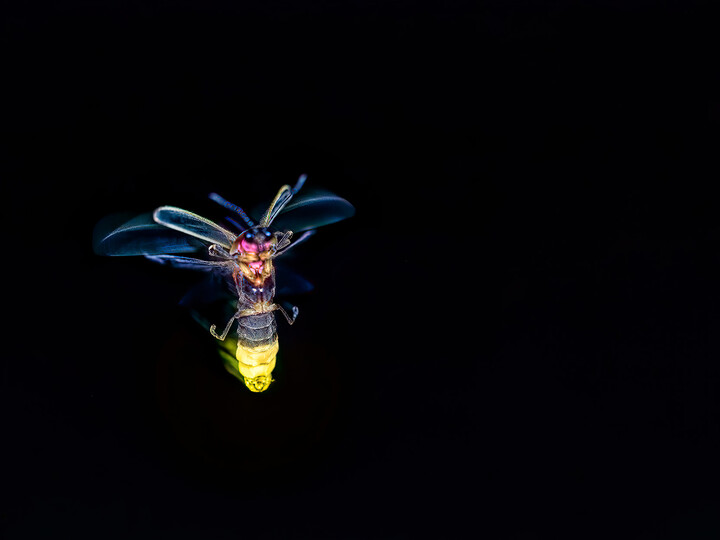All you have to do is spend 10 minutes per week counting the lightning bugs that visit your garden at night.
Sitting on your patio and watching the lightning bugs glowing in your yard could be more than just a pleasant way to enjoy a summer evening this year. It could be quite illuminating (pun intended) if you record what you see for Firefly Watch, a citizen science project aimed at helping researchers better understand how firefly populations are doing across North America. These insects are both predators of many garden pests and essential pollinators, so it's important to find out if their numbers are growing or shrinking. That's why Mass Audubon, a nonprofit that protects over 38,000 acres of land in Massachusetts, is asking people to spend 10 minutes per week counting firefly flashes. Even if you don't see any, that will still provide valuable information to scientists.

If you want to participate in the project, try to start keeping an eye out for fireflies before they normally come out in your area. These insects become active in warm, humid weather, so if your area is having a hotter summer than usual, you might start seeing these insects earlier than usual. For Firefly Watch, scientists also want to know when fireflies start appearing in various regions, so try to make a note of when you first start seeing those tell-tale flashes in your area.
But there's no surefire way to know when fireflies will start appearing; it needs to be at least 50°F to see any, but you also need to look at the right time. "Another caveat is that some fireflies only put on a show for 20 or 30 minutes each evening, so if you go out to look a bit too early or too late, you may miss them," says Alex Dohan, education department program coordinator for Firefly Watch. In most places around the country, fireflies will show up sometime in June, but can appear as early as May. "Another way to get local information is to check out your nearest science center or wildlife sanctuary; places like that often run firefly programming," Dohan says. Don't worry too much about spotting the first fireflies of the year though; even if they've already emerged in your region, your observations can still be helpful.
To get started, find a spot where you can sit for about 10 minutes every week and watch for fireflies (your backyard would be perfect!). It needs to be an area where you can clearly see while staying in the same place. Before you start reporting your firefly findings, you’ll also need to take note of a few environmental factors, including the type of habitat (such as a forest, open field, or lawn, and if it’s been mowed recently), temperature, rainfall, wind, cloud cover, and if there are any artificial lights in the area.

For Firefly Watch, you’ll be counting the number of fireflies you see flashing as well as looking at the flash patterns. Different species of fireflies light up in different patterns. Mass Audobon has a chart to help you learn the flash patterns; some will just light up once, then wait five seconds or more before flashing again. Other species can quickly flash twice or three or more times in a row (one species found in Tennessee will even flash in synch with each other!).
You don’t need to identify specific species, just note if you see single-, double-, or triple-flash patterns. The observation sheet on Mass Audobon’s website makes it easy. Just count the number of flashing insects you see over three 10-second intervals, then record it.
The more data you collect, the better, but you don’t have to commit to recording fireflies every week this summer. Even a few weeks of your observations will help researchers learn more about fireflies across the U.S. After collecting your data, you can conveniently submit it online through Mass Audobon’s website. Any fireflies you see (or maybe don't see) are valuable to the project, so why not use a little of your patio time this summer to contribute to science.